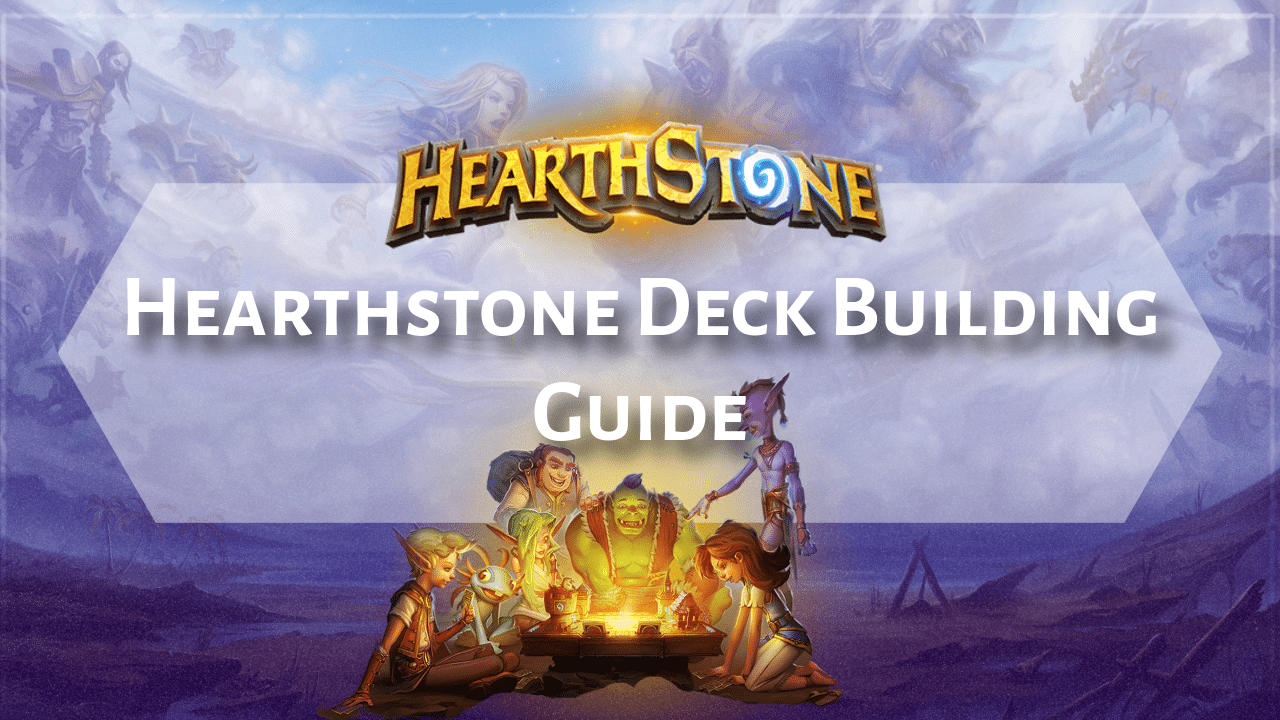
Hearthstone Deck Building Guide:Understanding the Fundamentals of Deck Building
Building a strong Hearthstone deck requires a strategic approach, beginning with selecting a hero class that aligns with your preferred playstyle. Each class has a unique Hero Power and exclusive cards that define its strengths and weaknesses, making experimentation key to finding the right fit. Once you’ve chosen a class, understanding deck archetypes is crucial. Hearthstone decks typically fall into three main categories: Aggro, Mid-Range, and Control.
Aggro decks focus on fast-paced offense, using low-cost minions and direct damage to win before the opponent can establish their strategy. Mid-Range decks offer a balance between aggression and control, utilizing efficient minions and board presence to maintain pressure and secure victory. Control decks emphasize survival and resource management, aiming to dominate the late game by exhausting the opponent’s resources and deploying powerful minions or game-winning combos.
Beyond choosing an archetype, defining your win condition is essential for creating a strong and effective deck. Your win condition dictates how your deck secures victory, whether by overwhelming opponents with relentless early aggression, maintaining board control through efficient trades and removal, or outlasting your opponent with powerful late-game plays. A clear win condition helps guide your card choices, ensuring that every card in your deck contributes to executing your strategy consistently.
To support your win condition, it’s crucial to build a well-structured mana curve that allows for smooth and efficient gameplay. A balanced deck includes a mix of low, mid, and high-cost cards, preventing early-game stagnation where you lack playable options and avoiding late-game inefficiency where you might have too many high-cost cards without the necessary time to play them. A strong mana curve ensures that you can make effective plays at every stage of the match, keeping up pressure in aggressive decks, maintaining tempo in midrange strategies, or preparing for a late-game power spike in control decks.
By optimizing both your win condition and mana curve, you increase the deck’s adaptability against various opponents, improving consistency and maximizing your chances of success. Whether you’re playing an aggressive, midrange, or control strategy, structuring your deck around a clear plan and a smooth curve will lead to more effective decision-making and stronger overall gameplay.
With a clear strategy in place, refining your deck through playtesting is key. Testing your deck against different opponents and archetypes helps identify weaknesses, dead cards, and areas for improvement. Removing underperforming cards and replacing them with better alternatives enhances consistency and effectiveness. Tech cards—specific cards chosen to counter popular meta strategies—can further refine your deck’s performance in competitive play. However, balance is crucial, as too many reactive cards can weaken your core strategy.
Lastly, keeping the deck streamlined is essential, especially for beginners. A common mistake new players make is trying to include too many different mechanics or strategies in a single deck, which can lead to inconsistent performance and difficulty in executing a clear game plan. Instead, focusing on a core theme or synergy will result in a more cohesive and effective deck. Choosing a primary strategy—whether it revolves around a specific minion type, class ability, or card interaction—ensures that all the cards work together toward a common goal. This approach makes it easier to refine the deck over time, as you can identify what is working and what needs adjustment without being overwhelmed by too many moving parts.
Simplicity and consistency are key factors in a successful deck. A streamlined deck allows for more reliable draws and better execution of your intended strategy. It also helps you develop a deeper understanding of how your deck functions, making it easier to anticipate plays, make strategic decisions, and adapt to different opponents. As you gain experience, you can experiment with adding tech cards or secondary strategies, but it’s important to maintain focus on your deck’s core strength rather than diluting it with unnecessary complexity.
Whether you choose to build your own deck from scratch or modify an existing deck list, mastering these fundamental principles will provide a strong foundation for success. A well-constructed deck enhances both your strategic thinking and enjoyment of the game. With a streamlined approach, each match becomes a dynamic and engaging experience, allowing you to learn, adapt, and improve with every game you play.
The Deck Building Process: Step-by-Step
After mastering the fundamentals, the next step in deck building is to establish a clear theme or core strategy. This begins with selecting a class and deciding on a consistent theme, which could be centered around specific minion types like Beasts, Murlocs, or Dragons, mechanics such as Deathrattles or Secrets, or even a particular card that serves as the foundation of your deck. A well-defined theme helps streamline your card choices and ensures a cohesive strategy.
Once you have chosen a theme, identifying the core cards that directly support it is essential. These core cards form the backbone of your deck, defining its playstyle and creating synergy between different elements. For example, in a Deathrattle-based deck, key minions with powerful Deathrattle effects should be prioritized, along with cards that trigger or enhance these effects. After securing the core of your theme, the next step is to incorporate strong class-specific cards that complement your chosen strategy. These are staple cards that provide versatility, efficiency, or strong standalone value. Even if they don’t directly align with your theme, they can enhance your overall deck strength by providing removal, card draw, or additional win conditions.
With the primary framework in place, the remaining slots in your 30-card deck should be filled with complementary cards and neutral minions that reinforce your strategy. These additions should contribute to a well-rounded game plan and include secondary win conditions in case your primary approach is disrupted. Tech cards, chosen to counter popular meta strategies, can also be included, though moderation is key to maintaining consistency.
Additionally, ensuring your deck has a smooth mana curve is crucial. Curve fillers—effective cards at various mana costs—help guarantee that you have viable plays at every stage of the game, preventing turns where you lack impactful options. Neutral minions can also provide additional synergy or strong standalone value, making them useful inclusions.
A well-balanced deck must also include a mix of removal and utility cards. Removal spells allow you to control the opponent’s board by eliminating threats, whether through single-target removal for dealing with powerful minions or area-of-effect (AoE) removal to clear multiple weaker enemies. Utility cards, such as card draw effects, healing, or spell disruption, enhance your deck’s flexibility and adaptability, ensuring you can respond effectively to various situations.
Once your deck is assembled, reviewing and refining your mana curve is necessary for smooth gameplay. The distribution of card costs should align with your deck’s archetype. Aggro decks favor a heavy concentration of low-cost cards to apply early pressure, Mid-Range decks maintain a balanced spread for steady board presence, and Control decks include more high-cost cards to dominate in the late game. Avoid large gaps in your mana curve, especially in the early and mid-game, to ensure a consistent flow of plays and avoid scenarios where you have no viable options.
Lastly, it’s important to resist the temptation to overcomplicate your deck by incorporating too many different strategies. While it might be tempting to include a variety of powerful cards or multiple win conditions, doing so can dilute your deck’s effectiveness and make it less consistent. A streamlined, focused deck with a clear win condition will always perform more reliably than one that is scattered and unfocused. Every card in your deck should serve a specific purpose that aligns with your overall strategy, ensuring that your plays remain efficient and cohesive throughout the match.
Maximizing synergy is key to building a successful deck. Cards that work well together will create powerful interactions, improving your ability to control the board, maintain pressure, or execute game-winning combos. Straying too far from your core theme can lead to awkward hands, inefficient turns, and a lack of clear direction in matches. Instead, prioritize cards that directly support your deck’s primary strategy while maintaining a balanced mix of removal, utility, and win conditions.
Refining your deck is an ongoing process, and staying true to your chosen theme will make it easier to identify what works and what needs improvement. As you playtest, pay attention to how consistently your deck executes its game plan. If certain cards frequently feel out of place or don’t contribute to your wins, don’t hesitate to replace them with better-fitting options. A well-constructed deck should not only be powerful but also adaptable, allowing you to adjust to different matchups without losing focus.
By keeping your deck streamlined, ensuring synergy among your cards, and making thoughtful refinements, you will create a more effective and reliable deck. This approach will not only improve your win rate but also enhance your overall gameplay experience, making each match a test of strategy and skill.
Testing and Refining Your Deck
After building your deck, the next crucial step is to test it in real matches to evaluate its effectiveness. Playing games allows you to assess how well your deck functions in different scenarios and against a variety of opponents. Observe how consistently you can execute your intended strategy and whether your chosen cards contribute meaningfully to your overall game plan.
As you playtest, take note of weaknesses and underperforming cards. Some cards may frequently sit in your hand without being useful, while others may not have a significant impact on your victories. Identifying these inefficiencies is essential for refining your deck. Additionally, pay attention to any recurring losses against specific deck archetypes or strategies. If you consistently struggle against a certain playstyle, it may indicate gaps in your deck’s ability to handle those threats.
Deck building is an ongoing and iterative process, requiring regular adjustments to improve consistency and adaptability. Be willing to swap out underperforming cards for alternatives that enhance your deck’s synergy, strengthen its win conditions, or improve its ability to respond to common threats. Experimenting with different card choices is essential, as even minor changes can significantly impact your deck’s overall performance.
Most successful decks go through multiple refinements before they reach an optimal state. If a particular type of card proves effective in helping you execute your strategy, consider adding similar ones to reinforce your game plan. Conversely, if a certain card repeatedly underperforms, removing it in favor of something more impactful can increase your deck’s overall efficiency.
Continuous playtesting and fine-tuning are essential to building a well-rounded and competitive deck. Simply assembling a deck is not enough—testing it in real matches will reveal how well it functions against different opponents and strategies. Each game provides valuable insight into your deck’s strengths and weaknesses, allowing you to assess which cards consistently contribute to your success and which ones may be underperforming.
As you gain experience, you’ll develop a better understanding of your deck’s overall flow, its ability to handle various game situations, and how well it executes its win condition. Pay attention to patterns in your matches—are you struggling against aggressive decks? Do you frequently find yourself running out of resources? Are there cards that consistently feel weak or unnecessary? Identifying these trends will help you make more informed adjustments to improve your deck’s efficiency and reliability.
Refining your deck is an ongoing process, especially as the game’s meta evolves. Some cards may become less effective as certain strategies gain popularity, requiring you to adapt your deck to remain competitive. Swapping out underperforming cards for stronger alternatives, adjusting your mana curve for smoother gameplay, and adding tech cards to counter common threats are all part of the optimization process. Even small changes can have a significant impact on your deck’s consistency and overall effectiveness.
By continuously testing and fine-tuning your deck, you will ensure that it remains strong and adaptable in different matchups. This proactive approach will not only help you develop a more powerful deck but also enhance your overall gameplay experience, making each match a strategic challenge where your improvements are reflected in your performance. The more you refine your deck, the more confident and skilled you’ll become, leading to more rewarding and enjoyable games.
Additional Tips for Beginners
For beginners, starting with a simple and straightforward strategy is the best approach to learning the fundamentals of Hearthstone. Aggro and midrange decks are ideal choices, as they focus on clear game plans and are easier to pilot compared to more complex strategies. Aggro decks emphasize fast-paced offense, using low-cost minions and direct damage to pressure opponents early, while midrange decks strike a balance between aggression and control, allowing players to develop board presence and manage resources effectively. These deck types help new players understand key concepts such as playing on curve, maintaining tempo, and making efficient trades.
When constructing a deck, focusing on synergies is crucial. Synergy refers to how well your cards work together to form a cohesive strategy. Many class-specific cards naturally have built-in synergies, making it easier to build around them. For example, some classes excel at summoning token minions, while others benefit from spells that interact with specific mechanics like Deathrattles or Secrets. Identifying these natural synergies and maximizing their potential will significantly enhance your deck’s effectiveness.
While having an in-depth understanding of the meta-game—the ever-changing landscape of popular decks and strategies—is not necessary for beginners, being aware of commonly played decks can help you make informed decisions. Observing the types of opponents you frequently encounter will provide valuable insight into the current meta and allow you to make strategic choices, such as including tech cards to counter dominant decks. Learning from real matchups is an excellent way to understand which decks are prevalent and how to adapt to them.
Most importantly, remember to experiment and have fun. Hearthstone offers a nearly limitless number of deck-building possibilities, and every match is an opportunity to refine your approach. Trying different strategies will help you discover what works best for your playstyle and improve your ability to adapt.
While building your own decks from scratch is a rewarding experience, studying successful deck lists—often referred to as netdecking—can provide valuable insights into card selection, mana curves, and overall deck construction. These lists serve as an excellent foundation for learning how different archetypes function. You can modify these decks to fit your available cards and personal preferences, allowing for a more customized approach while still benefiting from tested strategies.
For those looking to further refine their skills, tools such as Hearthstone Deck Tracker can offer additional advantages. These tools provide useful data on deck tracking, opponent tendencies, and draw probabilities, giving players deeper insight into their decision-making process. While not essential for success, they can help optimize gameplay by providing valuable statistical information.
By following these steps—starting with simple strategies, focusing on synergy, learning from real matches, experimenting with different ideas, and utilizing available resources—you can develop the skills necessary to build effective and enjoyable Hearthstone decks. With experience, you’ll gain confidence in crafting decks that suit your playstyle, adapt to the meta, and provide a consistently strong performance in matches. effective and enjoyable Hearthstone decks.













